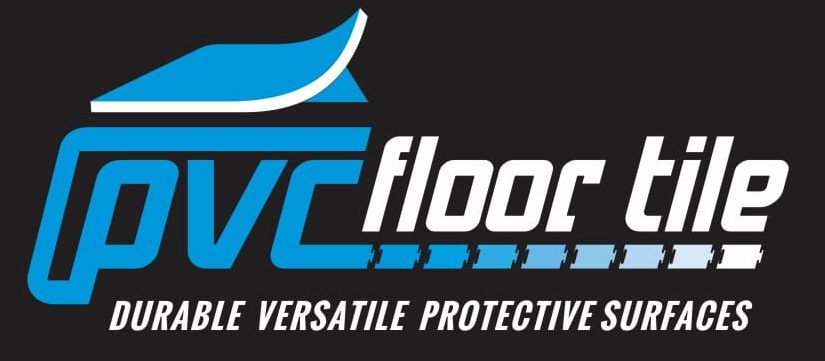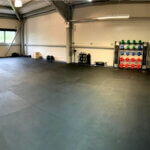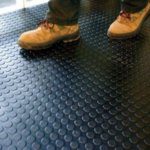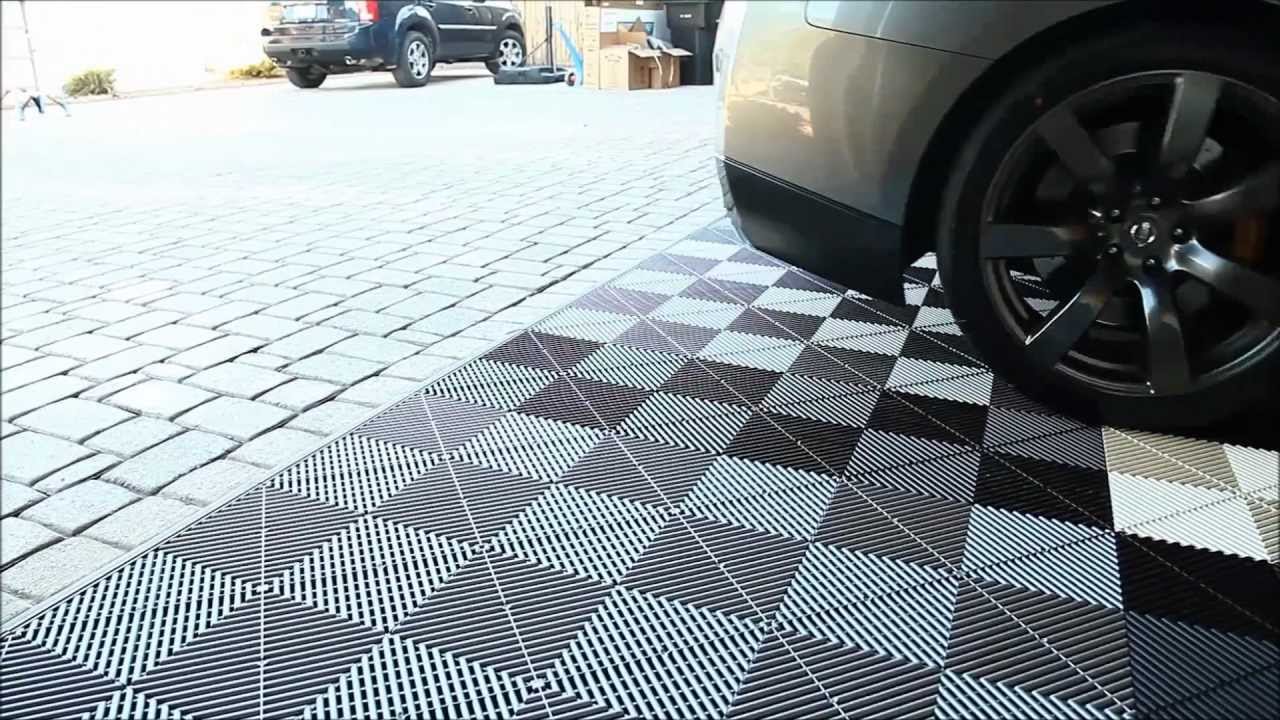Different Types of Floor Mats
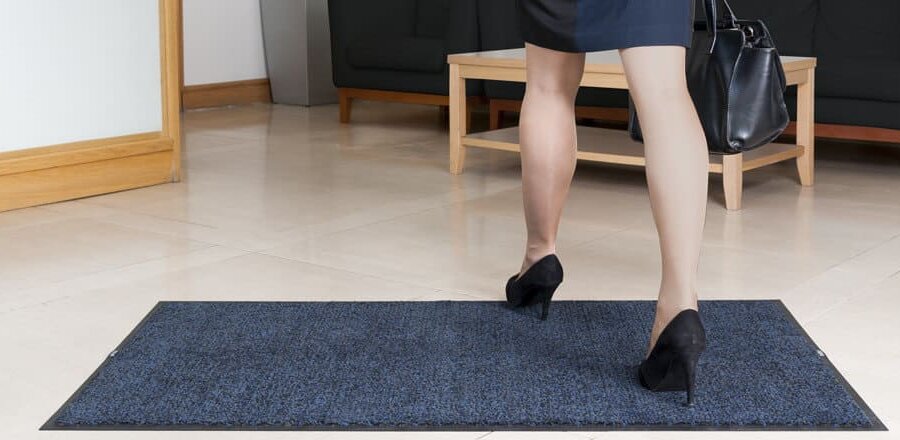
Floor mats are a common sight in homes, offices, and commercial spaces. They serve a variety of purposes, from enhancing the aesthetic appeal of a space to providing safety and comfort. With so many options available, it can be overwhelming to choose the right floor mat for your needs. In this article, we will explore different types of floor mats and their uses to help you make an informed decision.
1. Entrance Mats:
Entrance mats, also known as welcome mats or doormats, are placed at the entrance of a building or room. Their primary purpose is to trap dirt, debris, and moisture from shoes, preventing them from being tracked indoors. Entrance mats come in various materials, such as rubber, nylon, or coir, and can be customized with logos or designs.
2. Anti-Fatigue Mats:
Anti-fatigue mats are designed to provide comfort and relieve stress on the body, particularly in areas where people stand for long periods. They are commonly used in commercial kitchens, workshops, and factories. These mats have cushioning properties that reduce fatigue and strain on the feet, legs, and back.
3. Kitchen Mats:
Kitchen mats are specifically designed for use in kitchens, where spills and splatters are common. They provide a non-slip surface, preventing accidents caused by wet floors. These mats are often made of rubber or vinyl, which are easy to clean and resistant to stains and oils.
4. Gym Mats:
Gym mats are essential for creating a safe and comfortable workout environment. They provide cushioning and shock absorption, reducing the risk of injuries during exercises. Gym mats are available in different thicknesses and materials, such as foam or rubber, catering to various fitness activities like yoga, weightlifting, or martial arts.
5. Chair Mats:
Chair mats are used to protect the flooring underneath office chairs. They prevent damage caused by the constant movement and friction of chair wheels. Chair mats are typically made of durable materials like PVC or polycarbonate and come in different shapes and sizes to fit various desk configurations.
6. Logo Mats:
Logo mats are customised mats that display a company logo, slogan, or message. They serve both functional and promotional purposes. Logo mats can be placed at entrances, reception areas, or trade show booths, creating a professional and branded image while also trapping dirt and moisture.
7. Outdoor Mats:
Outdoor mats are designed to withstand exposure to the elements, such as rain, snow, and UV rays. They are commonly used in front of entrances, patios, or pool areas. Outdoor mats are made of durable materials like rubber or polypropylene, which are resistant to fading, mould, and mildew.
8. Bathroom Mats:
Bathroom mats are used to absorb water and prevent slipping in wet areas like bathrooms or shower rooms. They are usually made of absorbent materials like cotton or microfiber and have a non-slip backing for added safety. Bathroom mats come in various sizes and designs to complement any bathroom decor.
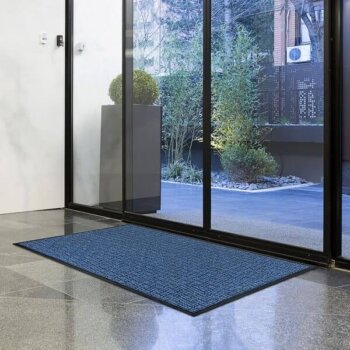
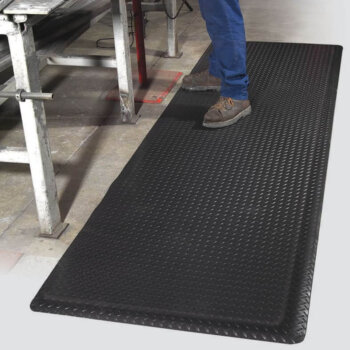
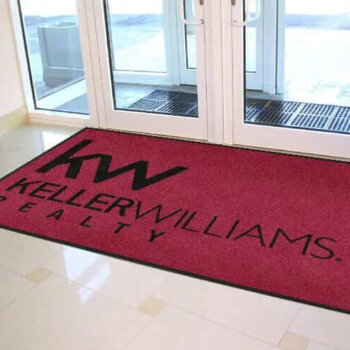
Frequently Asked Questions About Floor Mats
Question 1: What are industrial mats typically used for?
Industrial mats aren’t just tough; they’re your best bet for keeping workplace accidents at bay and making those long standing hours a bit easier on the body. In spots where spills, oil, or water might make floors slippery—think workshop floors or rainy day entrances—these mats cling to the ground to prevent slips. On the flip side, if your job keeps you on your feet, anti-fatigue mats are like a cushioned haven, reducing the stress on your legs and back and making your day a little less strenuous.
Question 2: What tasks do interior mats (wiper mats) perform?
Ever wondered why the office stays so clean, despite the weather outside? Thank interior mats, or wiper mats, as they’re also known. These mats work wonders at keeping the dirt at bay, especially when paired with outdoor scraper mats. Placed strategically around high-traffic indoor areas like coffee stations or near the printers, they pick up the dirt and spills, keeping the floors spotless. Plus, with their rubber backing, they stick right where you place them—no sliding around and causing trips!
Question 3: Why are scraper mats recommended to be used with other entrance mats?
Picture this: a scraper mat at every entrance, acting as the first line of defense against dirt and debris. These mats are great at scraping off the muck from shoes but team them up with a wiper mat, and you’ve got a dynamic duo. The wiper mat takes over to catch finer dirt and moisture, making sure your entrance is not just clean but also safe. This tag-team effort not only keeps your space pristine but also cuts down on cleaning costs. Smart, right?
Question 4: Why is soil management important in buildings?
Think of soil management as the unsung hero of building maintenance. About 85% of the dirt inside buildings is walked right through the front door! This dirt isn’t just unsightly; it’s a mix of dry particles and greasier substances that can wear down your floors and kick up allergies. By stopping dirt at the door with strategic mat placement, you can keep your building looking good and feeling healthy, not to mention saving on some hefty cleaning bills.
Question 5: What are the primary matting categories and mat types?
When it comes to mats, there’s a perfect fit for every spot. Entrance mats greet you right at the door, catching dirt before it can enter. Interior mats keep the insides cozy and clean. Industrial mats are there to cushion those who stand all day in workshops or factories. And if you want something special, custom mats let you add a personal touch, be it a splash of color or your brand’s logo.
In conclusion, choosing the right floor mat depends on the specific needs and requirements of the space. Whether it’s for trapping dirt, enhancing safety, providing comfort, or promoting a brand, there is a floor mat available for every purpose.
Consider the type of flooring, the level of foot traffic, and the desired functionality when selecting a floor mat to ensure maximum effectiveness and longevity.
